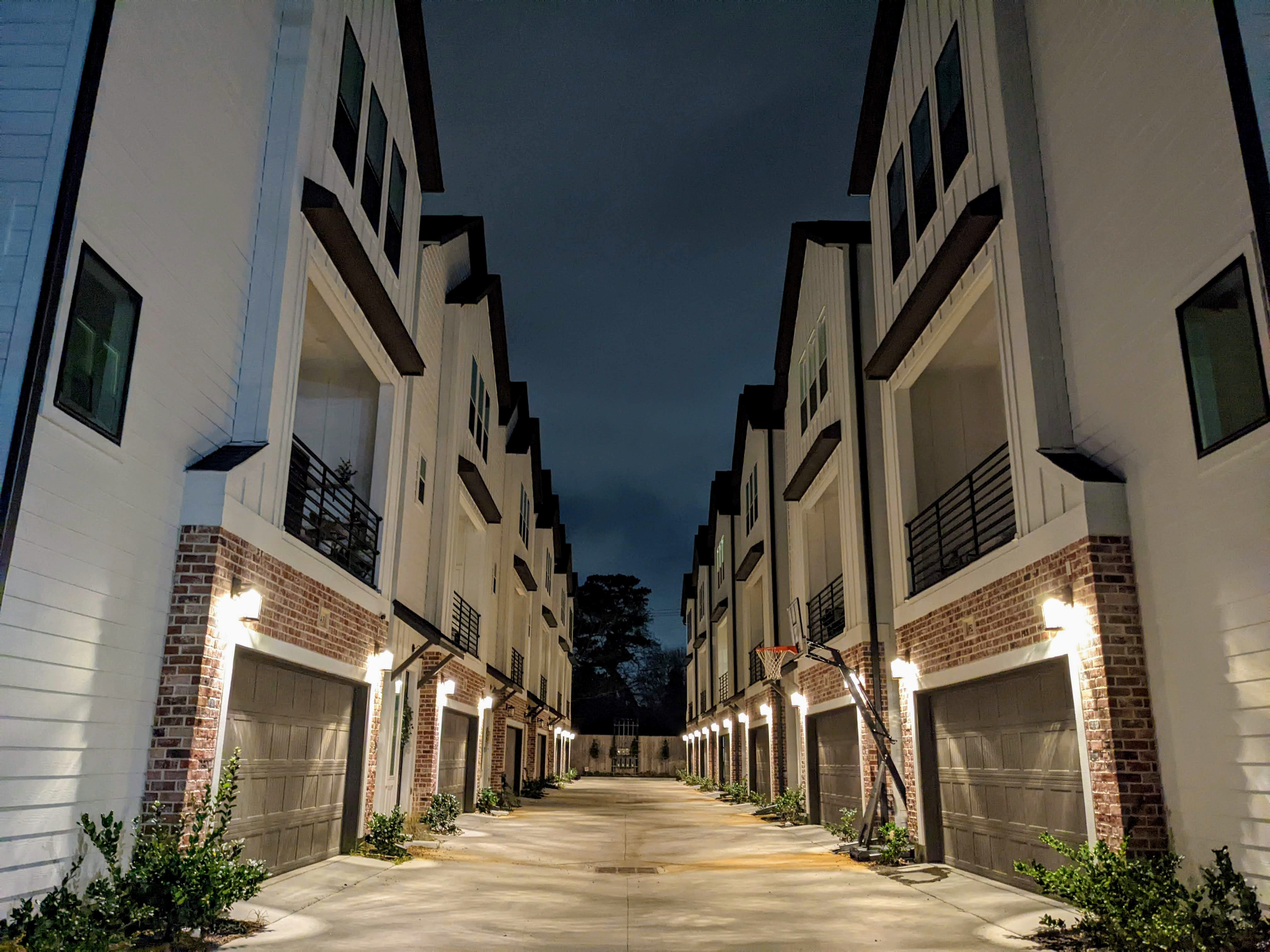Given that I’ve written a few papers about Harris County, Texas, and even helped republish a book about the city of Houston, it’s a little embarrassing to admit I had never been there. So when a Canadian buddy suggested meeting up in the Bayou City for barbeque ahead of his conference there, I jumped at the chance.

Houston has long been a trivia answer as the “only big city without zoning”, but it has risen in urbanists’ estimation in the last decade as the consequences of zoning became worse in most cities and, at the same time, Houston aggressively deregulated:
- In 1998, Houston cut its minimum lot size for a house from 5,000 square feet to 2,500 or 1,400, depending on layout and lot coverage. In 2013, the reform was extended into the growing northern and western suburbs, which are mostly governed by the City of Houston as “extra-territorial jurisdiction.”
- The city latereliminated parking minimums in downtown and two adjacent areas.
So what are the things one can learn from driving and walking around Houston that aren’t clear from analyzing Harris County residential tax data or browsing satellite imagery?
1. “Car-oriented” and “sprawl” aren’t the same thing
The word “sprawl” is imprecise. But it surely does not apply to heavily urbanized areas where office towers mingle with multi-story apartment buildings. Easterners are accustomed to a dichotomy between “walkable urban” and “driveable suburban”. Much of Houston’s core is “driveable urban.” The combination seemed at its most extreme in Midtown. From a satellite view, it looks like it should be a lively urban neighborhood. But from behind the wheel, its main surface roads feel like highways.

In eastern and midwestern cities, urban cores often give way to neighborhoods where most buildings have a suburban form but the streets are still urban – they have a compact grid, sidewalks, perhaps transit, and more recently bike lanes. With upzoning, these places could become fully urban.
Houston reverses the dichotomy, placing urban buildings on suburban roads. The city is clearly trying to fix this. Where redevelopment replaces suburban-density ranch houses with dense, tall townhouses, the city appears to require sidewalk installation.

2. Design without shame
Most recent and contemporary American architecture is frankly bland. The most audacious “style” in the D.C. area is the multi-gabled “McMansion.” Houston simply has more variety and a willingness to embrace decorative or experimental styles that East Coast snobs would find tasteless.

50’s-style neon sign 
Spanish Colonial Revival courtyard 
Corrugated-steel townhomes 
Neo-brutalist courtyard 
Italianate mansion block and modernist multifamily
Shameless design peaked, for us, in the artsy Montrose neighborhood. Just because you live near the Rothko Chapel doesn’t mean you have to decorate in funerary tones. Nope, go ahead and commission that Provençal farmhouse mansion.
3. Radical integration
Of course, wealthy neighborhoods get custom architecture. But Montrose shows another aspect of Houston: multimillion dollar mansions sit comfortably across the street from a dingy dingbat. This presumably reflects incomplete gentrification today or, perhaps, incomplete neighborhood decline in some previous era. But it should not be a surprise that a city that is always rising or falling with oil prices has a radical openness to integrating uses, typologies, and price points.
Perhaps – and this is speculative – the automobile orientation of even the core neighborhoods encourages greater tolerance for neighborhood diversity. A driver’s “neighborhood” is larger and more diffuse than a pedestrian’s, and the steel walls of a car give one both detachment and security from one’s surroundings.

4. Urban privacy
In the rapidly growing, hipster Heights area, urban integration includes large, outdoor breweries and restaurants. My buddies and I adopted Walking Stick Brewing, and also visited a sandlot Cajun bar, where we sat between a 3-year-old’s birthday party and a motorcycle gang. One would forgive the neighbors for objecting strenuously to the noise, which assuredly did not subside before midnight.

In most of the U.S., zoning is an important way that neighborhoods preserve privacy and quiet. And in general, I would characterize the U.S. as using space as its primary guarantor of privacy. Typical suburban homes have little, if any, fencing and prioritize grass on all sides. How does one achieve any privacy with those parameters? Only by setting the house back a few dozen feet from the road.
Other places achieve privacy in other ways. In New York City, it’s height. In San Jose, Costa Rica, it’s houses oriented inward, around central courtyards. Houstonians achieve privacy by orienting many new townhouses onto a share courtyard-driveway, sometimes gated, which creates an intermediate space between the private home and the public street. The courtyards are incentivized by city lot size rules (a courtyard-driveway counts as “open space”, while a sole driveway does not). They also use tuck-under garages to elevate the first living story, which creates vertical separation from the street.

The courtyard-driveways also provide a shared play space, as evidenced by frequent basketball hoops. Despite what Jane Jacobs may have told you, city streets are not viable play spaces for 21st-century children. But cul-de-sacs can be. Houston’s courtyard-and-grid model may be the ideal blend, unlocking the connectivity of a city while delivering the secure sociability of a cul-de-sac to a large share of homes.

Inspired
As a market urbanist, I was already a fan of Houston in theory. But the visit made me significantly upgrade my evaluation of Houston as a place. It is far more interesting than Austin, for one thing. And although it is automobile-oriented, it is definitively a city, with all that implies.





